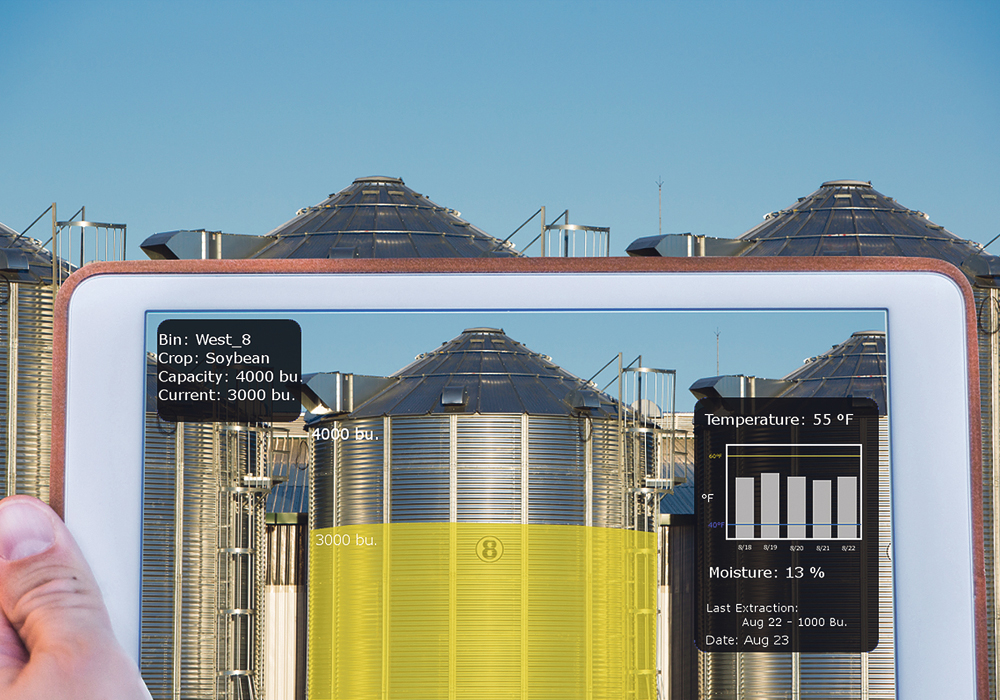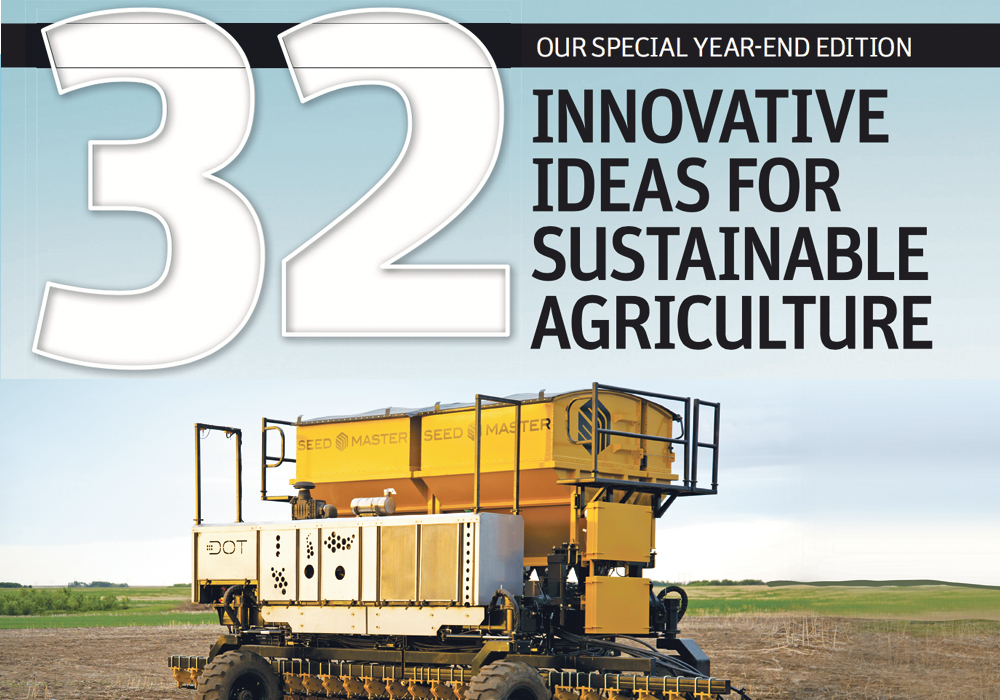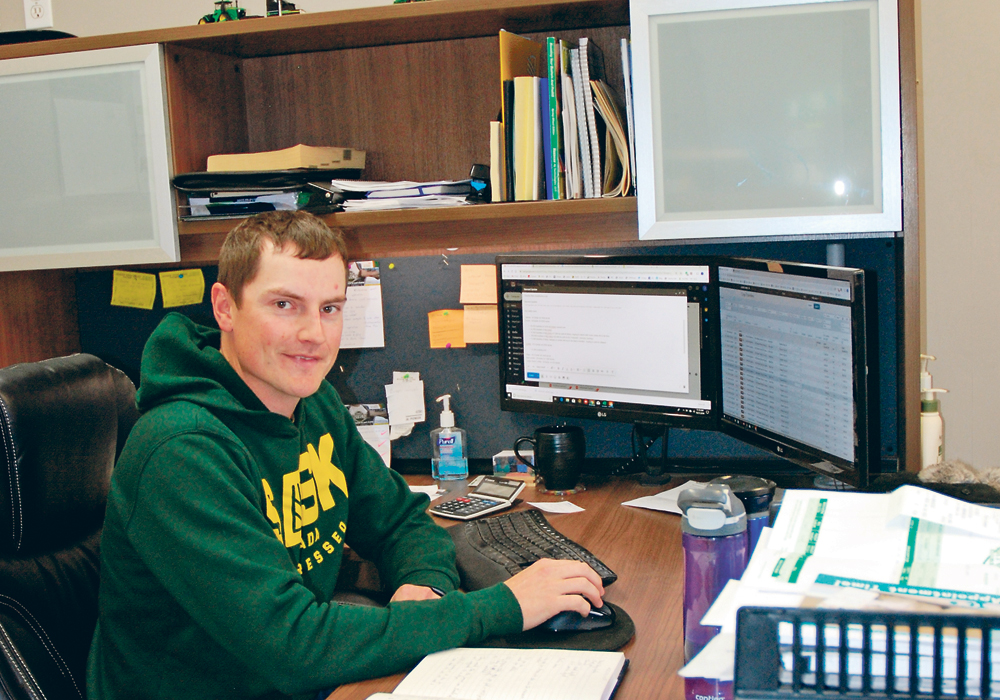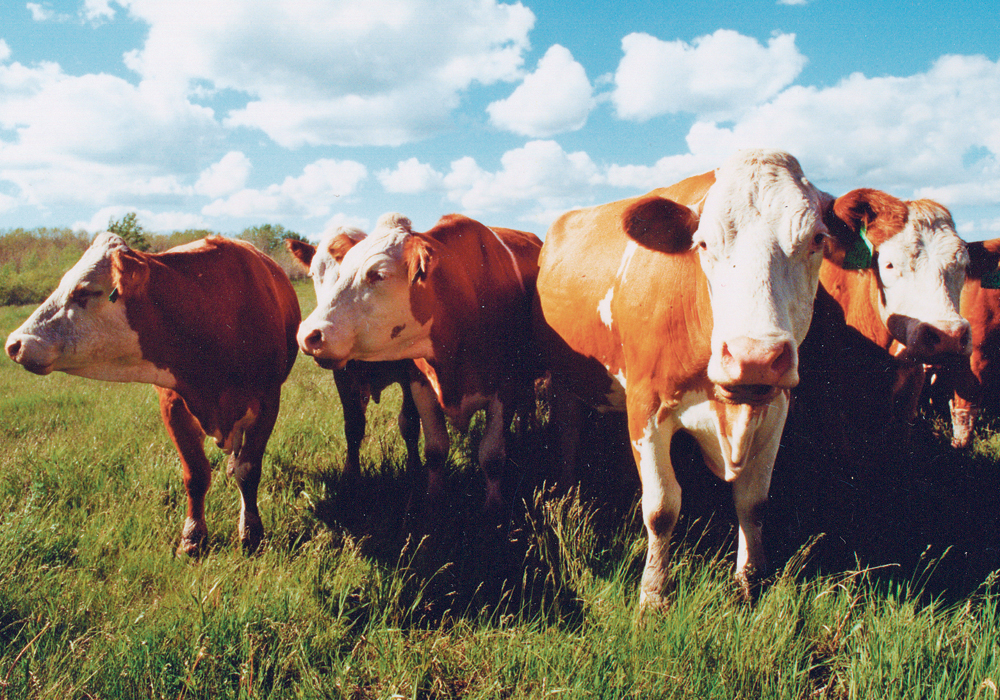Augmented reality technology developed to help farmers compare crop conditions and review spray applications
Augmented reality (AR) will soon be used on Canadian farms to help producers make sense and manage their data.
AR is the overlaying of digital information over the real world, and is already widely used in with video games such as Pokemon.
Farmers will soon be able to look through a pair of AR capable glasses, or a device such as the Microsoft HoloLens, and see their production data presented as a hologram.
Then with a wave of hand or finger through the holographic environment, a farmer will be able to interact with the production information being displayed.
Read Also

Organic farmers urged to make better use of trade deals
Organic growers should be singing CUSMA’s praises, according to the Canadian Chamber of Commerce.
There are many advanced AR headsets already available for the gaming industry, and it’s only a matter of time until the technology is adopted by the agricultural industry.
“Augmented reality is here and it’s proving to be a useful way of operating on the farm,” said Dinen Subramaniam of JCA Electronics.
“Certainly using a tablet with a built-in camera or a smart phone, we’re able to recognize images of decals and other images that might show up on a piece of farm equipment.”
JCA Electronics builds electronics and control systems for agricultural implements.
“We are constantly working and experimenting with the latest technology, and two or three years ago we started building apps to enable our customers to be able to interact with their equipment using smart phones and tablets. Now a lot those products are hitting the field,” Subramaniam said.
The company is experimenting with control systems and interfaces producers will use in the future, such as AR.
“What we want to do is at the end of the day help the farmer understand his field and understand his operation as well as he can, and we do that by enabling equipment manufacturers to provide that added layer of information their equipment can provide,” Subramaniam said.
So how exactly will AR help producers?
An example would be a grower could look over their crop through a VR glasses and see various data sets or images superimposed over the crop.
For instance a grower could choose to see what the crop looked like at the same time last year, or the year before.
“You could potentially have different filters so that you don’t just see the crop or the height of the crop but you could see what the crop looked like when you used this application, or which applications were used in each segment of the field, or perhaps even the rate or prescriptions used in that area,” Subramaniam said.
Having information so readily available in a visual representation will give producers insight into fields that are currently difficult to obtain.
Subramaniam said an advantage of using AR devices is growers may be able to reduce the number of times they drive onto their fields.
“If we can provide that real time information so that when you’re already in the field that you can see a problem spot or a spot that’s actually doing really well. You might stop your sprayer, stop your tractor, get out and do a soil sample right there, and then you have that information to use while you’re actually operating your equipment,” he said.
AR capable glasses will be able to identify weeds and help producers understand the best approaches to dealing with pests.
“It could identify the type of herbicide that you need to use, and then go that extra step and indicate how you actually need to mix the chemicals to make sure that you don’t create a gel or create any other problems in your fertilizer,” Subramaniam said.
“It might even tie into your existing inventory to know if you have these chemicals in place, then you can go ahead and create the needed treatment for your plants.”
Multi-spectral image from satellites or drones could be integrated into the VR datasets, to help growers understand the reflective index of the plants at a specific time of year.
Growers can even fit their sprayers with a camera that records crop images that could be referenced immediately, or in later years.
“There really isn’t a limit to the type of information you can provide,” he said. “We can bring information from the cloud and let the operator decide what type of information they want to overlay.”
In the farmyard, a producer will be able to walk through their yard and see a holographic display of how full their fuel storage tanks are, or connect to bin sensors to see how much grain is in a bin and its temperature.
The glasses could even be used to estimate distances or the amount of grain in a bin without bin sensors.
“You could use an augmented reality device to look into a grain bin and it would use your optical camera and be able to estimate very accurately the amount of grain you have in your bin using the radius calculation, the amount of bin that you can see, and the amount of grain you can see as well,” Subramaniam said.
A farmer also could look through their glasses at a farm machine and have their service schedules displayed, as well as any related schematics when equipment needs to be repaired.
“We are using AR to really create the next level of owner’s manual, so you can actually use the device pointed at a decal or a specific part of an equipment. A visualization model will be shown to indicate what the decal might mean, how you need to handle it, what type of service frequency you need, how to do the service, and it can take you step by step through the process,” Subramaniam said.
He said he sees two hurdles before augmented reality becomes widely used on farms. The first is the development of devices that are smaller and easier to use then the Microsoft HoloLens.
“We don’t envision farmers using something like a HoloLens in terms of its current physical profile right now. But technology is constantly getting smaller, so we envision in that in something like three or four years you can put something like sunglasses on and now would really know this is an augmented reality device other than yourself,” Subramaniam said.
The second challenge is to merge all of the different data sets being produced on the farm such as farm management software, agronomy software, and information from equipment manufacturers.
















